Travel Tales from The Hub
Iceland: A North Atlantic Wonderland
More Photo Tips | Video Gallery | Photo Gallery | Enewsletter sign-up

By Ken Hubbard
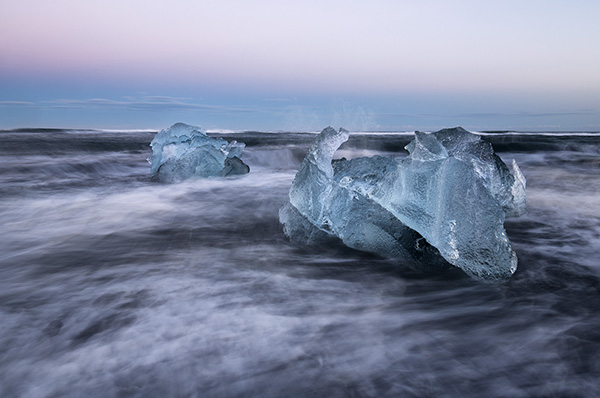
Diamond Beach: Tamron SP 15-30mm Di VC USD G2 – 2.0 sec, f/22, ISO 64 @ 30mm
Click image to view larger
Iceland is a country of contrasts, from its very short daylight hours in winter and almost 24 hours of sunlight in summer. It is also known as “The Land of Fire and Ice”, a land in constant juxtapose, with some of the most active volcanoes and largest glaciers in Europe living side by side on an island that is only 40,000 square miles. A population of more than 800,000 sheep and lamb live on the island (more than doubling the human population of 350,000), and as many as 80,000 Icelandic horses roam the hills as well. To this day farming is still a core tradition and way of life on this Nordic island. Settled by Vikings as early as 870 AD the first National assembly of commonwealth was founded in 930 AD.

Snæfellsjökull National Park: Tamron SP 24-70mm Di VC USD G2 – 1/60 sec, f/16, ISO 400 @ 40mm
Click image to view larger
Iceland is one of the youngest land masses on the planet, forming only 25 million years ago. The island was formed do to its positioning on a volcanic hot spot which sits on top of the mid Atlantic ridge where the Eurasian and North American tectonic plates meet. The Island is still growing to this day due to the expansion of these two tectonic plates. As you drive the Island you can see the sheer power of the volcanoes that litter the landscape and the old lava flows that are now covered in moss and go on for miles. The volcanoes on Iceland are still very active with the last eruption of two different volcanoes happening in both 2010 and then again in 2011.
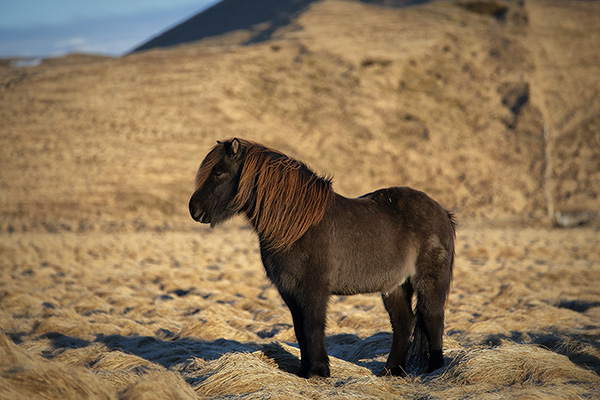
Icelandic Horse: Tamron 70-210 Di VC USD – 1/800 sec, f/4, ISO 200 @ 210mm
Click image to view larger
The Icelandic Horse – Even though they were developed from the Norse settler ponies in the 9th & 10th centuries, these “Ponies” are today registered as horses. Once you arrive to Iceland and encounter these horses for the first time you will see how intelligent, curious, and friendly they are, they will capture your heart immediately upon stopping and walking up to them. Since there are very few diseases that affect these horses the government of Iceland has issued some very strict rules on exporting and importing the horse. No other horses are allowed into Iceland and once a Icelandic horse has left, it is not allowed to return to the island. This may seem like very strict laws, but it has allowed this unique breed to live without disease and other outside variables.

Church at Ingjaldsholl: Tamron 70-210 Di VC USD – 1/100 Sec, f/16, ISO 400 at 185mm
Click image to view larger
When you travel around Iceland from the bigger cities to the smaller towns, the ever-changing landscape in-between will keep your eyes focused on its beautiful vistas. It’s hard not to get mesmerized by the rolling hills, giant glaciers and towering mountains and volcanoes. There is more detail to this incredible landscape than just rock, grass and snow. Look carefully and you will see churches peppered throughout the land. Tucked away at the base of a mountain or built on a lava field along the North Atlantic coast, the churches of Iceland have some of the most dramatic and jaw dropping backdrops. The Church at Ingjaldsholl is just one of more than 350 churches scattered in Iceland’s countryside. Built in 1903 near the towns of Rif and Hellissandur on the Snæfellsnes peninsula this church is considered to be the oldest concrete church in the world.
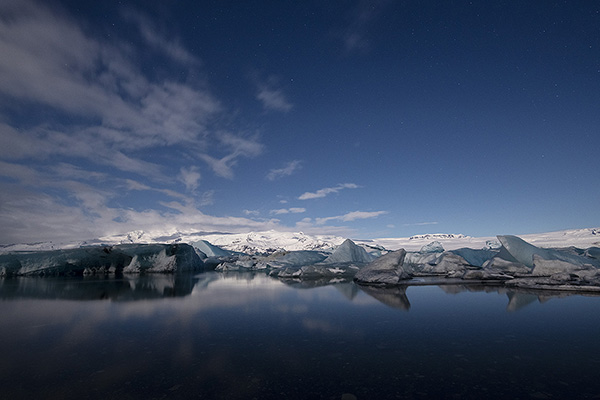
Jokulsarlon Glacier Lagoon: Tamron SP 15-30mm Di VC USD G2 – 15 Secs, f/8, ISO 1250 at 20mm
Click image to view larger
The name for Iceland as “The land of Fire and Ice” cannot come anymore true when driving from the towns of Selfoss to Hofn. Within this 250 mile drive you will see countless glaciers, iconic waterfalls, the black sand beach of Reynisfjara and the Skaftareldarhraun lava fields. All incredibly beautiful in their own right, but in winter there is one location that tops them all, Jökulsárlón. This Glacier Lagoon that sits at the base of Vatnajökull Glacier and National Park is known for its clear blue water and icebergs (during the winter months) that slowly make their way through this small channel of water out to the Atlantic Ocean. These icebergs gather in a lake that was created by the retreat of Breiðamerkurjökull glacier. This lake is less than 100 years old but is now the deepest lake in Iceland. At night this is an amazing and somewhat spooky location to visit. Fortunately, I was there on a full moon and could easily make my way around to the backside of the lagoon. The moonlight lit the icebergs beautifully as they gently made their way to the ocean.
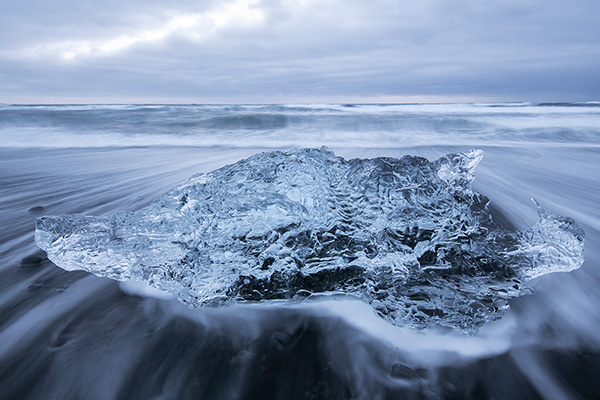
Diamond Beach: Tamron SP 15-30mm Di VC USD G2 – 2.5 Sec, f/16, ISO 64 at 19mm
Click image to view larger
As the icebergs make their way from the glacier lagoon of Jökulsárlón out into the Atlantic Ocean, the tide eventually returns them back to the shores of Iceland. They end up beaching themselves upon the black sands just outside of the lagoon. This beach is appropriately named Diamond Beach for all the pieces of ice that line the shore. There are two beaches you can go and see this incredible phenomenon, either side of the Bridge at Jökulsárlón has access points to the beaches. Make sure you bring waterproof boots and a tripod, some of the best photos are when the water is retreating back to the ocean.
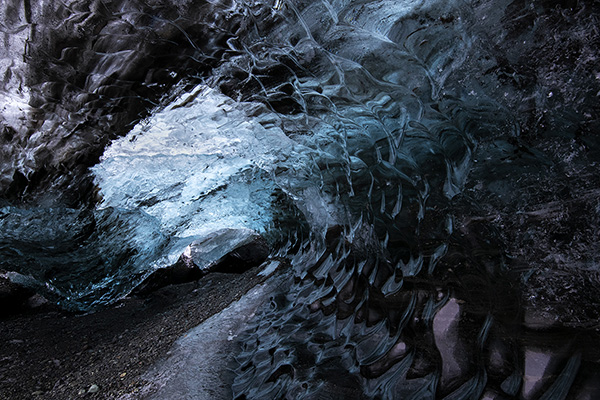
Ice Cave: Tamron SP 15-30mm Di VC USD G2 – 1/60th Sec, f/16, ISO 1600 at 18mm
Click image to view larger
So where does all this ice come from that ends up on Diamond Beach, the second largest glacier in Europe, known as Vatnajökull or the “Water Glacier”? Even though the Glacier has been in a steady decline in size, at 3127 square miles Vatnajökull takes up more that 8% of Iceland’s land mass. This glacier started forming more that 2500 years just after the previous ice age glaciers had disappeared and covers two mountain ridges. One of the most incredible experiences is walking across this amazing glacier and entering an ice cave. These caves are formed and ultimately destroyed by wind and water as the temperatures change during the seasons. To know that you are in a location that will never look the same from season to season shows the sheer power of mother nature and reminds you she is ultimately in control.
Tamron Lenses Used:
SP 15-30mm Di VC USD G2
SP 24-70mm Di VC USD G2
70-210mm Di VC USD
More Photo Tips | Watch Videos | Learn More About Tamron Lenses | Photo Gallery